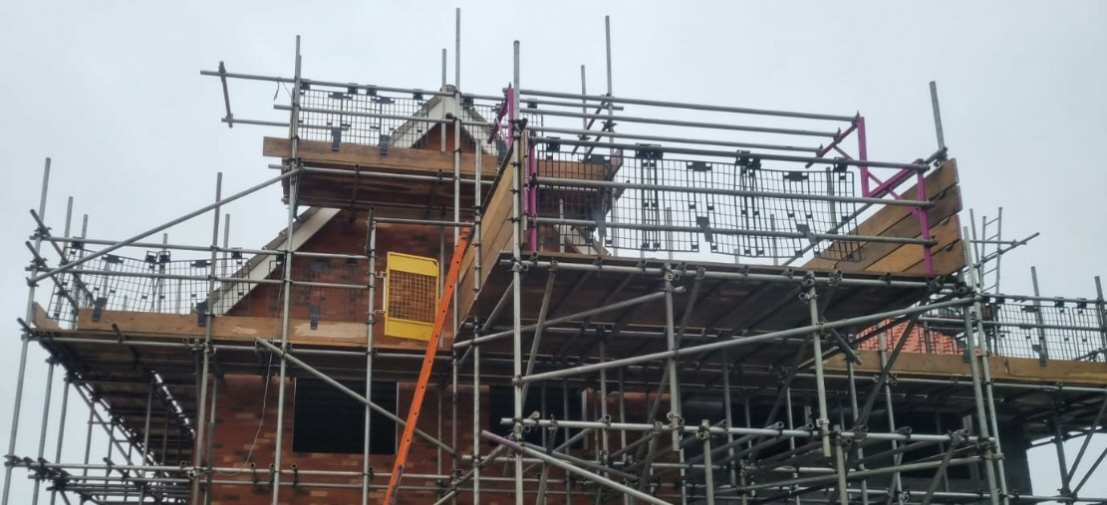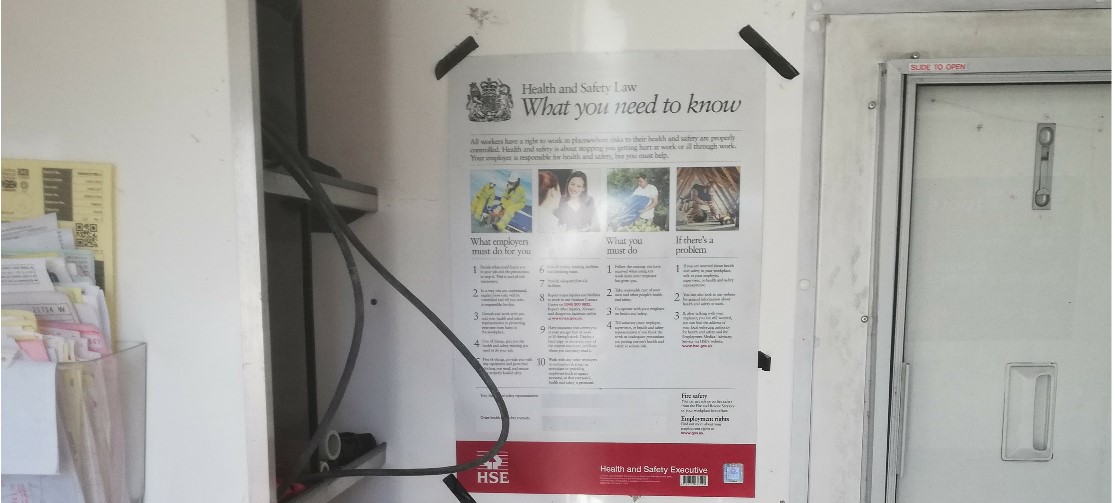T: 01473 407020
CDM Regulations 2015 PRINCIPAL DESIGNER
Article Author: Dr. Khalid Bhutto - Director Safescope - 1 December 2022
Contents
Who is a Principal Designer? When is a principal designer required? Importance of Principal Designer Role? What a Principal Designer does? What are the duties of a principal designer? Principal Designer Duties explained? What is the legal requirement for Principal Designer appointment? Who appoints a Principal Designer? Can anyone make the appointment of a Principal Designer? Individual or an organisation as Principal Designer? Who can become a Principal Designer? Principal Designer Competence Can there be more than one Principal Designers on a project? When should principal designer be appointed? What is the purpose of a Principal Designer? History and background of Principal Designer role? What if a Principal Designer is not appointed? Further CDM Guides Need help?
Who is a Principal Designer?
“A Principal Designer is an individual or an organisation appointed by the client to manage design health and safety issues on a construction project.”
- “The role of Principal Designer is a legal requirement under
Construction (Design and Management) Regulations 2015 (CDM Regulations) for any construction work carried out in the UK that involvesmore than one contractor.” . - The term 'Principal Designer' can be misleading and may easily be mistaken with a 'Lead Designer' or a Lead Architect. A Principal Designer under
CDM Regulations is responsible for health and safety aspects of the project design and is not responsible for any architectural, engineering, or technical design considerations. - The role of Principal Designer starts from very early stages of the design (i.e. from concept design) through planning and detailed design and usually extends right up to the completion of construction works on site.
- The Principal Designer role under
CDM Regulations is important in terms of identifying and managing health and safety risk in the design which could potentially cause issues duringconstruction phase and more critically duringpost construction operation and maintenance phase. - The Principal Designer is not a completely new role starting in 2015. Since the inception of the
CDM Regulations back in 1994, roles with broadly similar sort of duties, albeit with different names have existed and have been applicable to the construction projects. The Planning Supervisor role existed from 1994/95 and then it changed to CDM Co-ordinator in 2007 which remained applicable before being replaced by the Principal Designer in 2015. However, the Principal Designer role is more stringent in terms of its legal liability and is more involved compared to its two predecessors. For a brief background and history of the Principal Designer Role please follow the sectionHistory and Background of Principal Designer Role .
Find out more about the
When is a principal designer required?
A Principal Designer is required to be appointed on every
Importance of Principal Designer Role?
A Principal Designer is responsible for design health and safety matters on a

What a Principal Designer does?
As mentioned above, a Principal Designer is responsible for co-ordination of design health and safety aspects on a
What are the duties of a principal designer?
Regulation 11 and 12 of the CDM Regulations 2015 list the duties of the Principal Designer on a project and they are as follows:
- Plan, manage and monitor the
Pre-construction Phase (Regulation 11(1)) - Co-ordinate matters relating to health and safety during
Pre-construction Phase taking into accountGeneral Principles of Prevention , contents of anyConstruction Phase Plan andHealth and Safety File ‐ in particular during planning and developing project timescales (Regulation 11(2)) - Identify, eliminate or control, so far as is reasonably practicable, (in planning, managing and monitoring the
Pre-construction Phase ) foreseeable health and safety risks during construction, maintenance, cleaning and use as a workplace (Regulation 11(3)) - Ensure all
Designers comply with their duties (Regulation 11(4)) - Ensure all involved in
Pre-construction Phase co-ordinate and co-operate with each other (Regulation 11(5)) - Prepare
Pre-construction Information (Regulation 11(6)a)) - Provide
Pre-construction Information to every designer and contractor (appointed or prospective) (Regulation 11(6)b)) - For the duration of Principal Designer appointment, liaise with
Principal Contractor and share information about construction phase and co-ordination of health and safety matters (Regulation 11(7)) - Provide
Pre-construction Information and any information received from theDesigners to thePrincipal Contractor Regulation 12(3)) - Prepare a
Health and Safety File during thePre-construction Phase and review, update and revise regularly (Regulation 12(5 and 6)) - Pass on the draft
Health and Safety File to thePrincipal Contractor , if Principal Designer appointment finishes before the project completion (Regulation 12(8))

Explanation of Principal Designer Duties
The above legal duties of a Principal Designer are briefly explained as follows:
Plan, manage and monitor the Pre-construction Phase (Regulation 11(1))
There is similar responsibility for a
Co-ordinate matters relating to health and safety during Pre-construction Phase taking into account General Principles of Prevention, contents of any Construction Phase Plan and Health and Safety File ‐ in particular during planning and developing project timescales (Regulation 11(2)).
This is a key responsibility for the Principal Designer role.
Identify, eliminate or control, so far as is reasonably practicable, (in planning, managing and monitoring the Pre-construction Phase foreseeable health and safety risks during construction, maintenance, cleaning and use as a workplace (Regulation 11(3)).
This is without a doubt the most onerous responsibility imposed on a Principal Designer. In addition to co-ordinating health and safety matters during the
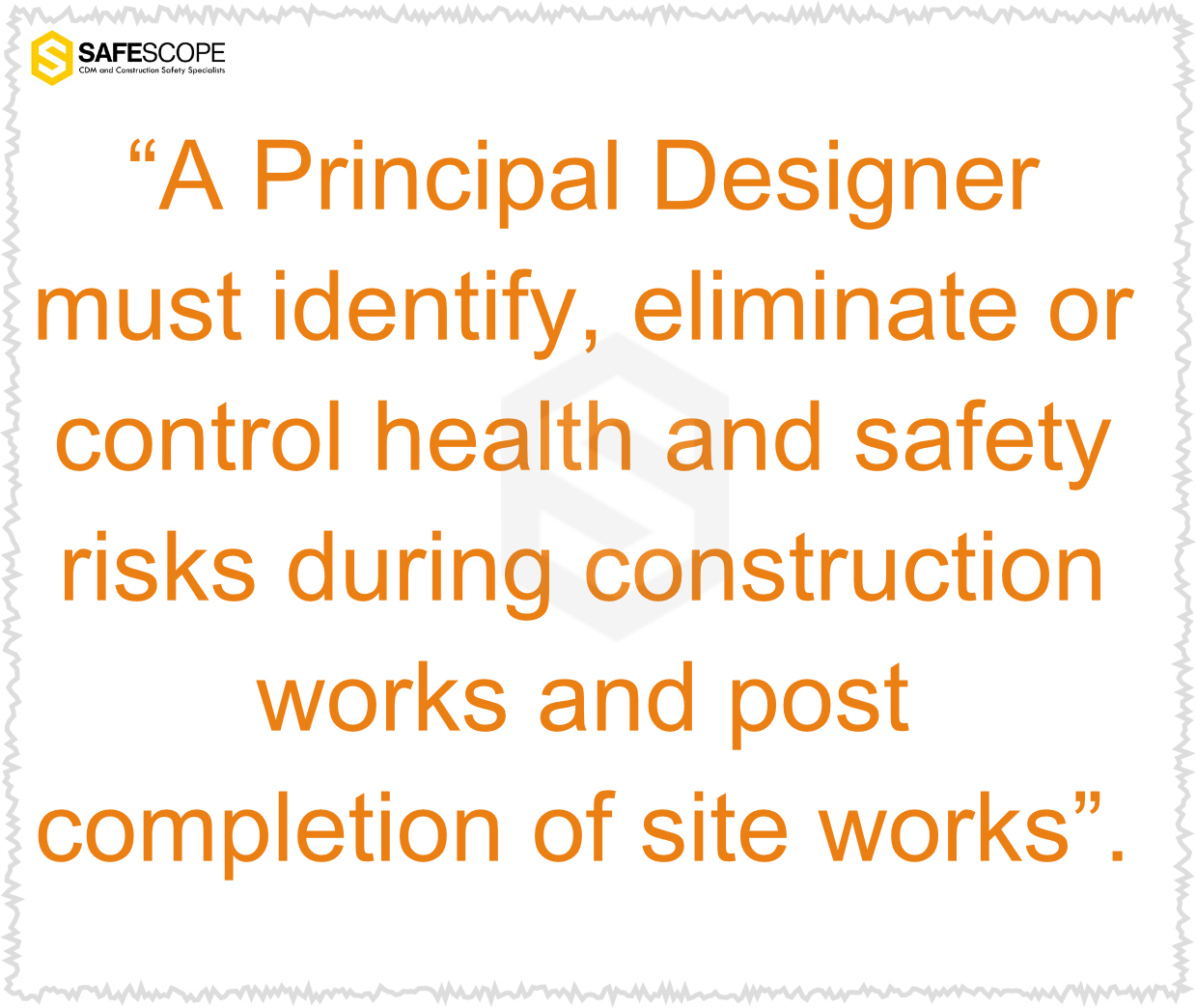
Ensure all Designers comply with their duties (Regulation 11(4))
Ensure all involved in pre-construction Phase co-ordinate and co-operate with each other (Regulation 11(5))
This requirement is similar to the one above for co-ordination of health and safety matters during the
Prepare Pre-construction Information (Regulation 11(6)a))
Please see section
Provide Pre-construction Information (PCI) to every designer and contractor (appointed or prospective) (Regulation 11(6)b))
As mentioned above, the
For the duration of Principal Designer appointment, liaise with Principal Contractor and share information about construction phase and co-ordination of health and safety matters (Regulation 11(7))
The Principal Designer is also required to liaise with the appointed
Provide Pre-construction Information (PCI) and any information received from the Designers to the Principal Contractor (Regulation 12(3))
As described above, it is a duty of Principal Designer to pass on the
Prepare a Health and Safety File during the Pre-construction Phase and review, update and revise regularly (Regulation 12(5 and 6))
Please see section
Pass on the draft Health and Safety File to the Principal Contractor, if Principal Designer appointment finishes before the project completion (Regulation 12(8))
In those situations where the Principal Designer is appointed for a limited duration on the project and their role does not extend to the completion of site works, then the Principal Designer is required to pass on the incomplete or draft

What is the legal requirement for Principal Designer appointment?
Regulation 5(1) of the
Who appoints a Principal Designer?
As mentioned above in the question
Can anyone else make the appointment of a Principal Designer instead of the client?
As mentioned in the above question, although it is a
Who can be a Principal Designer?
Any person or an organisation who holds necessary and relevant
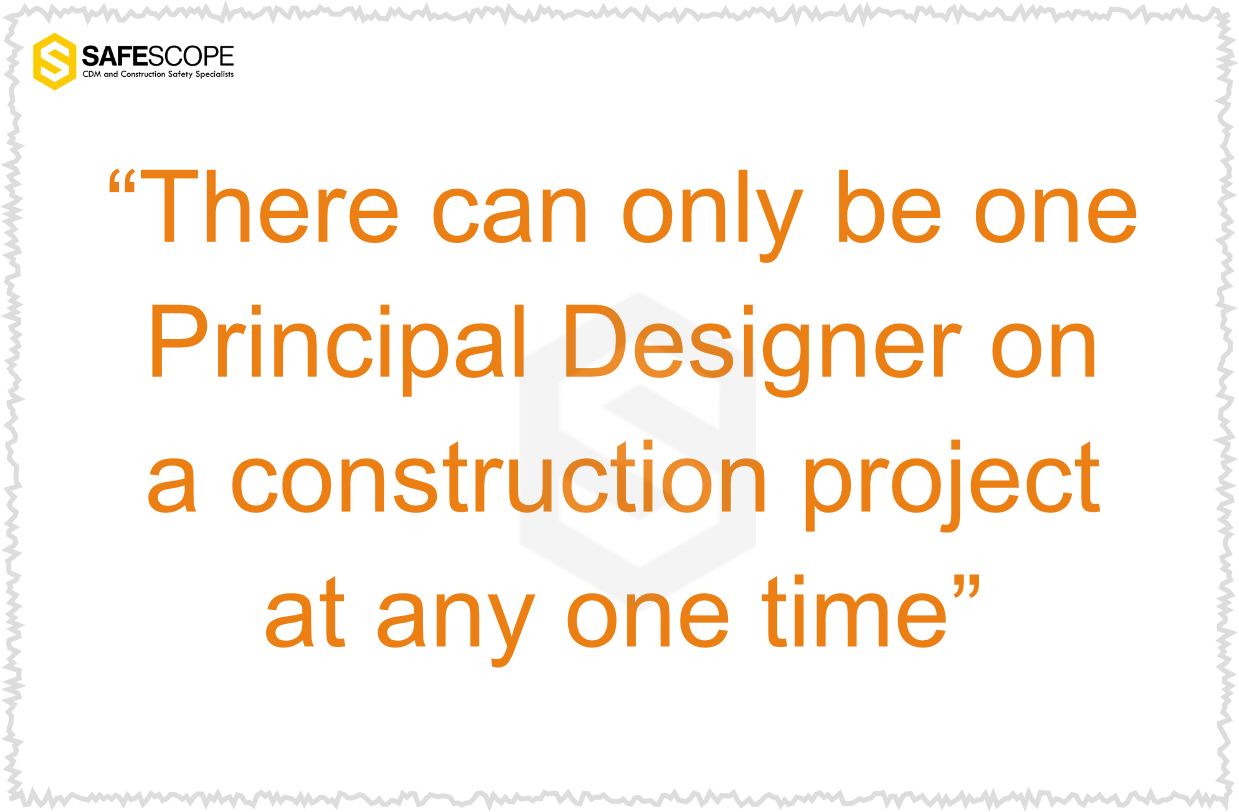
What (competence) skills, qualifications, knowledge, experience (SKE), and organisational capability are required by a Principal Designer?
To fulfil the role and Principal Designer responsibilities, the following skills, knowledge, experience, and organisational capability are required.
- The
CDM Regulations require that a Principal Designer must be adesigners by profession. - Understanding, knowledge and experience of identifying risks from the existing site conditions, commissioned surveys and reports etc.
- Understanding, knowledge and experience of architectural, structural, civil, mechanical, electrical and other relevant design disciplines.
- Understanding, knowledge and experience of health and safety legislation and legal requirements (theoretical and practical) and its application in the construction industry.
- Understanding, knowledge and experience of construction site operations.
- Understanding, knowledge and experience of project and facilities management, post site completion maintenance, repair and use.
- Good soft skills e.g. communication skills, team management and project management etc.
- If an organisation, the necessary arrangements and competent resources in place to project manage a number of Principal Designer appointments running concurrently.
As obvious from the above, CDM Principal Designer is a very involved role and will require a well-rounded understanding, knowledge and experience of different building design disciplines, health and safety, construction site operations and building maintenance and repair etc.
Who could become a Principal Designer, an individual or an organisation?
The
Can there be more than one Principal Designers on a project?
No, under the
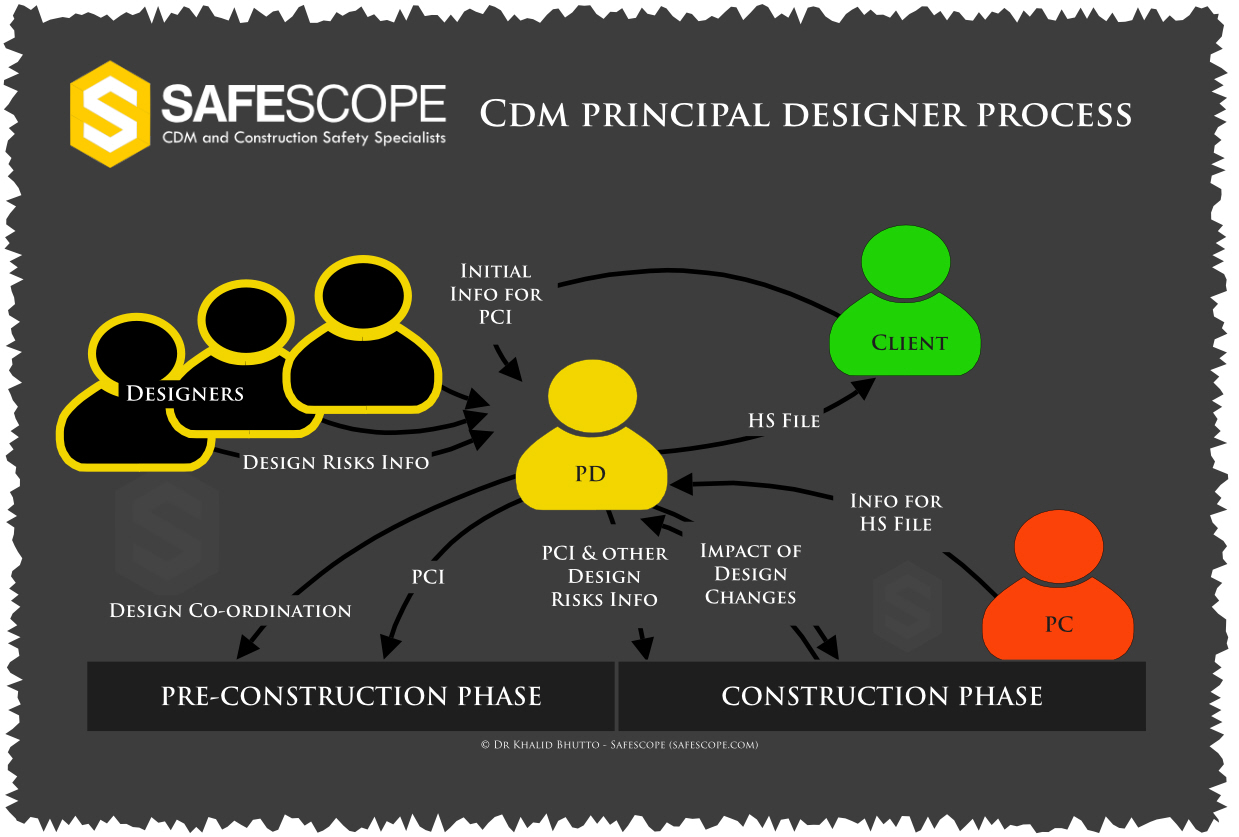
When should principal designers be appointed?
The appointment should be made as soon as possible, ideally during the concept design of a
What is the purpose of a Principal Designer?
History and background of Principal Designer role?
What will happen if a Principal Designer is not appointed?
As mentioned above, it is a legal requirement on the
Other CDM Guidance
In addition to this, we at (Safescope) have also produced a number of other in-depth CDM Guides on various related topics. These guides are available on this website. Please follow the Link .
Need help?
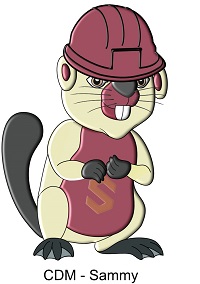
We (Safescope) specialise in CDM and Construction Health and Safety and provide proactive yet cost effective CDM Principal Designer , Client CDM Advisor , Principal Contractor CDM Advisor roles and various CDM Training Courses . Please get in contact for an informal chat or a hassle free prompt fee proposal.
Our Contact Details
For further information and a prompt hassle free fee proposal please contact us as follows:
- Please complete details in the
'Safescope CDM Fee Proposal' form . - Alternatively, please download and send us a completed
CDM Enquiry Form and we will get back to you promptly. - If you would rather talk to us then please contact Lindsey or Khalid on
01473 407020 - You can also get in touch with us by
contact@safescope.com

Director
T: 01473 407020
M: 07818 288122


